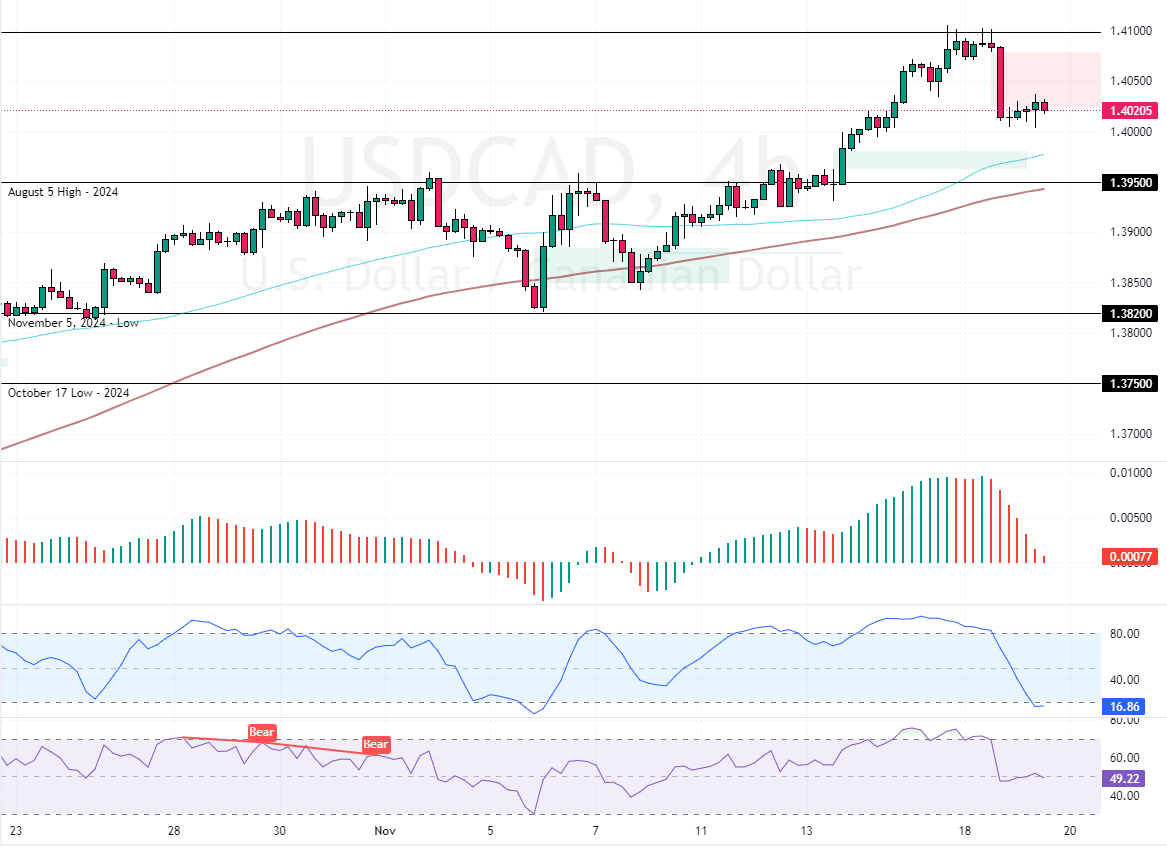The Canadian dollar is weakening, approaching 1.4 against the U.S. dollar—the lowest level since May 2020. This decline is due to increased buying of the U.S. dollar, falling oil prices, and concerns about China’s economic growth.

New Sanctions Threaten Canadian Exports and Dollar
The U.S. dollar is strengthening because markets anticipate a possible return of Trump, and inflationary policies might restrict the Federal Reserve’s ability to lower interest rates. Furthermore, new proposed sanctions on imports to the U.S. have raised worries about reduced demand for Canadian exports to its main trading partner.
At the same time, international demand for the Canadian dollar, often called the “loonie,” has decreased. This is because oil prices are dropping, and China’s demand outlook is weakening after disappointing economic data and stimulus efforts.
However, Canada’s economy is showing signs of strength. The unemployment rate is lower than expected, and positive PMI (Purchasing Managers’ Index) data has emerged. These factors have lessened expectations for significant interest rate cuts by the Bank of Canada, helping to limit the Canadian dollar’s decline.